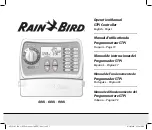
182 • Use in Hazardous Environments
Classification
meeting CENELEC and IEC
WAGO-I/O-SYSTEM
750
CANopen
Hydrogen being commonly encountered in chemical plants, frequently the ex-
plosion group IIC is requested for maximum safety.
6.3.3 Unit categories
Moreover, the areas of use (zones) and the conditions of use (explosion
groups) are subdivided into categories for the electrical operating means:
Unit
categories
Explosion
group
Area of use
M1 I
Fire-damp
protection
M2 I
Fire-damp
protection
1G
II
Zone 0 Explosive environment by gas, fumes or mist
2G
II
Zone 1 Explosive environment by gas, fumes or mist
3G
II
Zone 2 Explosive environment by gas, fumes or mist
1D
II
Zone 20 Explosive environment by dust
2D
II
Zone 21 Explosive environment by dust
3D
II
Zone 22 Explosive environment by dust
6.3.4 Temperature classes
The maximum surface temperature for electrical components of explosion pro-
tection group I is 150 °C (danger due to coal dust deposits) or 450 °C (if there
is no danger of coal dust deposit).
In line with the maximum surface temperature for all ignition protection types,
the electrical components are subdivided into temperature classes, as far as
electrical components of explosion protection group II are concerned. Here the
temperatures refer to a surrounding temperature of 40 °C for operation and
testing of the electrical components. The lowest ignition temperature of the
existing explosive atmosphere must be higher than the maximum surface tem-
perature.
Temperature classes
Maximum surface
temperature
Ignition temperature
of the combustible materials
T1
450 °C
> 450 °C
T2
300 °C
> 300 °C to 450 °C
T3
200 °C
> 200 °C to 300 °C
T4
135 °C
> 135 °C to 200 °C
T5
100 °C
>100 °C to 135 °C
T6
85°C
> 85 °C to 100 °C











































